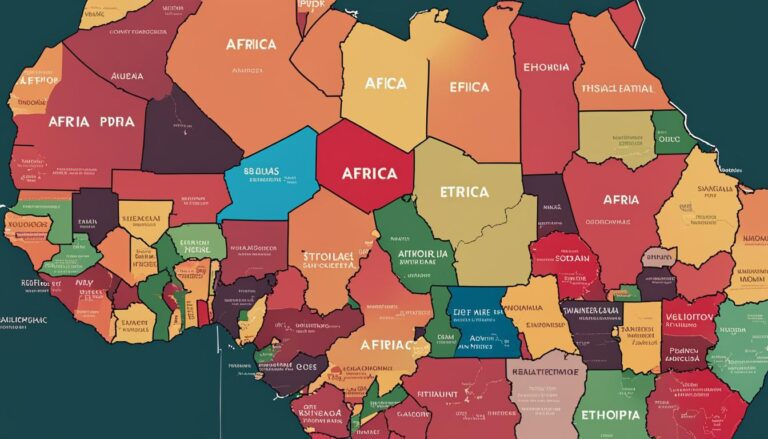What Are The Traditional Ethiopian Clothes?
Traditional Ethiopian Clothing: A Closer Look
Ethiopian clothing is rich in cultural heritage and history, reflecting the diverse traditions and customs of this East African nation. The traditional attire of Ethiopia is not only a symbol of pride but also a display of artistic skills and craftsmanship that have been passed down through generations. From the intricate designs to the vibrant colors, Ethiopian clothing holds a significant place in the country’s cultural identity.
One of the most recognizable traditional garments worn in Ethiopia is the "Kemis" for women and the "Shamma" for men. The Kemis is a long dress made from white cotton fabric and beautifully embroidered with colorful threads along the borders and sleeves. On the other hand, the Shamma is a large rectangular cloth worn like a toga and serves multiple purposes such as a shawl, a blanket, or even a makeshift carrying pouch.
Ethiopian attire is known for its intricate patterns and designs, with each region having its unique style. For example, the "Tilet" of the Amhara region is characterized by its distinct cross-shaped motif, while the "Netela" of the Oromo people features fine lines and stripes. These patterns not only enhance the aesthetic appeal of the clothing but also hold symbolic meanings related to fertility, protection, and spirituality.
The colors used in Ethiopian traditional clothing are not just for adornment but also carry cultural significance. White symbolizes purity and peace, while yellow represents hope and harmony. Red is commonly associated with power and wealth, while green signifies fertility and prosperity. The combination of these colors in various patterns creates a harmonious blend that reflects the cultural diversity and unity of the Ethiopian people.
In addition to the garments, accessories play a vital role in traditional Ethiopian fashion. Jewelry made from beads, silver, and gold are often worn to complement the attire, with each piece holding its unique cultural significance. Women often adorn themselves with earrings, necklaces, and bracelets, while men accessorize with rings and bracelets made from precious metals.
Traditional Ethiopian clothing is more than just fabric and thread; it is a tangible expression of the country’s rich history, cultural diversity, and artistic expression. It serves as a visual narrative of Ethiopia’s past, present, and future, reflecting the enduring spirit and creativity of its people.
Traditional Ethiopian Clothing: A Closer Look
Ethiopian attire reflects the rich cultural heritage and diverse history of the country. Traditional clothing in Ethiopia is known for its colorful designs, intricate patterns, and handwoven fabrics. The clothing worn by Ethiopians is not just a fashion statement but also holds significant cultural and religious meanings. Over the centuries, Ethiopian clothing has evolved, incorporating influences from various regions and communities within the country.
The history of Ethiopian attire dates back thousands of years and has been influenced by various factors such as trade, religion, and social status. One of the most iconic pieces of traditional Ethiopian clothing is the "Netela," a white cotton wrap with brightly colored stripes along the edges. The Netela is worn by both men and women and is considered a symbol of national pride.
Ethiopian clothing is also characterized by the use of handwoven fabrics such as "Shemma" and "Tibeb." Shemma is a cotton fabric with colorful stripes or checks, while Tibeb is a patterned fabric typically used for making dresses and outer garments. The intricate designs and patterns found in Ethiopian clothing are often symbolic and reflect the wearer’s identity, tribe, or social status.
Colors play a significant role in Ethiopian attire, with each color carrying its own meaning and symbolism. For example, white symbolizes purity and peace, while yellow represents fertility and prosperity. Red is often associated with power and wealth, and green symbolizes hope and youth. These vibrant colors are used in various combinations to create stunning patterns and designs in Ethiopian garments.
In addition to clothing, traditional Ethiopian fashion also includes a variety of accessories such as jewelry, scarves, and headpieces. Jewelry plays a crucial role in Ethiopian culture, with elaborate metalwork and beadwork used to create stunning pieces worn during special occasions and ceremonies. Scarves and headpieces are also essential accessories in Ethiopian fashion, with many designs incorporating intricate embroidery and vibrant colors.
Traditional Ethiopian clothing is a vibrant and integral part of the country’s cultural identity. The rich history, intricate designs, and symbolic meanings associated with Ethiopian attire make it truly unique and captivating. Whether worn for everyday use or special events, Ethiopian clothing reflects the pride, heritage, and diversity of the Ethiopian people.
Traditional Ethiopian Clothing: A Closer Look
Ethiopian traditional clothing is rich in history and culture, with each garment telling a unique story. One of the most striking aspects of traditional Ethiopian attire is the vibrant colors and intricate patterns used in the designs. These colors and patterns hold significant meanings and symbolisms in Ethiopian society, reflecting various aspects of life, beliefs, and traditions.
In Ethiopian culture, colors play a crucial role in clothing, with each color representing different ideas and emotions. For example, white is often worn during times of celebration and represents peace and purity. Red is a symbol of power, fertility, and passion, while yellow is associated with wealth and prosperity. Green symbolizes hope and health, and blue represents protection and the divine. Understanding these color symbolisms helps to appreciate the depth of meaning embedded in traditional Ethiopian clothing.
Alongside colors, patterns also play a significant role in Ethiopian garments. Geometric patterns such as diamonds, chevrons, and zigzags are commonly found in traditional clothing. These patterns are not merely decorative but hold symbolic significance. For instance, zigzag patterns symbolize snakes, which are believed to provide protection from evil spirits. Diamond patterns represent wealth and prosperity, while chevrons signify the interconnectedness of people and communities.
Moreover, traditional Ethiopian clothing is often embellished with intricate embroidery and beadwork, adding a touch of elegance and artistry to the garments. The embroidery techniques vary across different regions of Ethiopia, each reflecting the local traditions and craftsmanship. In addition to embroidery, handwoven textiles such as shawls, scarves, and wraps are integral parts of Ethiopian attire, showcasing the country’s rich textile heritage.
The blending of vibrant colors, symbolic patterns, and exquisite craftsmanship makes traditional Ethiopian clothing truly unique and culturally significant. Each garment is a testament to Ethiopia’s rich history, diverse heritage, and artistic expression. By understanding the significance of colors and patterns in Ethiopian garments, one can appreciate the beauty and cultural depth of this ancient and captivating form of dress.
Traditional Ethiopian clothing is not just fabric and threads but a tapestry of stories, symbols, and traditions woven into every stitch. The colors and patterns used in Ethiopian garments carry deep meanings that connect the wearer to their heritage and beliefs, making each attire a work of art and a symbol of cultural identity. Embracing traditional Ethiopian clothing is not just about wearing beautiful garments but honoring a legacy of creativity, craftsmanship, and cultural pride that has endured through generations.
Traditional Accessories in Ethiopian Fashion
Ethiopian traditional clothing is often complemented by a variety of accessories that hold great cultural and symbolic significance. Accessories play a vital role in enhancing the overall appearance of Ethiopian attire, adding a unique flair to the ensemble. These accessories are deeply rooted in the country’s rich history and are cherished for their craftsmanship and beauty.
One of the most iconic accessories in Ethiopian fashion is the "Netela." The Netela is a lightweight scarf made from cotton or silk fabric, often worn by both men and women. It is commonly used as a shawl or head covering and is known for its intricate designs and vibrant colors. The Netela adds elegance to traditional Ethiopian garments and is a symbol of pride and cultural identity.
Another essential accessory in Ethiopian fashion is the "Shemma." The Shemma is a handwoven cotton cloth that comes in various lengths and is adorned with traditional Ethiopian motifs. It is commonly worn as a wrap around the shoulders or waist, especially during formal occasions such as weddings or religious ceremonies. The Shemma is valued for its craftsmanship and the time-honored techniques used in its production.
Jewelry also holds a special place in Ethiopian traditional attire. Both men and women adorn themselves with an array of jewelry, including necklaces, bracelets, and earrings. Ethiopian jewelry is often made from intricate metalwork and colorful beads, reflecting the country’s rich cultural heritage. Jewelry is worn not only for aesthetic purposes but also as a symbol of status, wealth, and cultural identity.
Footwear is another important aspect of Ethiopian traditional fashion. Leather sandals, known as "Barabasso," are commonly worn by both men and women. These sandals are crafted from locally sourced leather and are designed for comfort and durability. Barabasso sandals are often embellished with intricate patterns and designs, adding a touch of style to the overall look.
In addition to these accessories, hats and headdresses are also a prominent feature of Ethiopian traditional clothing. Men often wear hats known as "Gabi" or "Jodphur," while women adorn their heads with intricately woven headscarves or headbands. These head coverings not only serve a practical purpose by protecting against the sun but also add an element of tradition and cultural pride to the attire.
Traditional accessories play a crucial role in Ethiopian fashion, adding depth, meaning, and beauty to traditional garments. From scarves and jewelry to footwear and headwear, these accessories contribute to the rich tapestry of Ethiopian culture and heritage, showcasing the country’s unique sense of style and identity.
Modern Influences on Traditional Ethiopian Fashion
When it comes to traditional Ethiopian clothing, the influence of modern fashion trends cannot be overlooked. Over the years, Ethiopian attire has evolved to incorporate contemporary styles while staying true to its cultural roots. This fusion of tradition and modernity has resulted in a unique and vibrant fashion scene that continues to captivate the world.
One of the key ways modern influences have impacted traditional Ethiopian fashion is through the use of new materials and fabrics. While traditional Ethiopian clothing was primarily made from cotton and woven by hand, modern designers are exploring a wide range of fabrics such as chiffon, silk, and organza to add a touch of luxury to traditional garments. This blend of traditional craftsmanship with modern materials has brought a fresh perspective to Ethiopian fashion.
Moreover, modern silhouettes and cuts have found their way into traditional Ethiopian clothing. Garments like the ‘Kemis’ and ‘Netela’ have been reimagined with contemporary tailoring techniques to create more fitted and structured looks. This adaptation allows traditional Ethiopian attire to be more versatile and suitable for both formal occasions and everyday wear.
In addition to materials and silhouettes, modern influences can also be seen in the color palette and patterns used in traditional Ethiopian clothing. While traditional garments were known for their vibrant hues and intricate designs, modern interpretations often feature a more subdued color scheme and minimalist patterns. This subtle shift reflects the changing tastes of Ethiopian consumers while still honoring the heritage of traditional attire.
Furthermore, the rise of social media and digital platforms has played a significant role in promoting traditional Ethiopian fashion to a global audience. Ethiopian designers are now able to showcase their work online, reaching a wider market and attracting international attention. This increased visibility has not only boosted the profile of Ethiopian fashion but has also inspired a new generation of designers to experiment with traditional motifs in innovative ways.
Modern influences have undoubtedly made their mark on traditional Ethiopian fashion, breathing new life into age-old styles and techniques. By embracing the best of both worlds, Ethiopian designers are preserving their cultural heritage while staying relevant in an ever-changing fashion landscape.
These efforts ensure that traditional Ethiopian clothing continues to thrive and inspire fashion enthusiasts around the world with its rich history and contemporary flair.
Conclusion
As we uncover the rich tapestry of traditional Ethiopian clothing, it becomes apparent that this ancient culture’s attire is much more than mere fabric and threads—it is a reflection of Ethiopia’s history, customs, and identity. The history and evolution of Ethiopian attire showcase a profound connection to the roots of the country, with each garment telling a story of resilience, tradition, and cultural pride. From the intricately woven patterns to the vibrant array of colors, every element in Ethiopian clothing holds significant meaning and symbolism that goes beyond mere aesthetics.
Colors and patterns play a vital role in Ethiopian garments, with each hue and motif carrying a symbolic significance. From the deep blues and vibrant reds representing power and fertility to the intricate designs symbolizing unity and cultural heritage, Ethiopian attire is a visual expression of the country’s values and beliefs. By donning these garments, Ethiopians not only showcase their cultural identity but also carry forward their ancestors’ traditions and stories through each embroidered stitch and dyed thread.
Traditional accessories in Ethiopian fashion add a touch of elegance and sophistication to the already exquisite attire. From the iconic Ethiopian crosses to the delicately crafted jewelry and headpieces, these accessories complement the garments and enhance the overall aesthetic appeal. Each accessory holds its own cultural meaning, making them an integral part of Ethiopian fashion and a reflection of the country’s religious and spiritual beliefs.
While traditional Ethiopian clothing remains deeply rooted in history and tradition, modern influences have also made their mark on the country’s fashion landscape. From contemporary silhouettes to fusion styles that blend traditional motifs with modern designs, Ethiopian fashion is evolving to cater to a global audience while staying true to its cultural heritage. Designers are experimenting with new fabrics, cuts, and styles to create a harmonious blend of tradition and modernity, showcasing Ethiopia’s unique fashion sense to the world.
Traditional Ethiopian clothing is not just a form of dress but a living embodiment of the country’s rich history, vibrant culture, and storied traditions. From the evolution of attire over centuries to the intricate details of colors, patterns, and accessories, Ethiopian fashion is a visual feast that captivates the senses and sparks curiosity about this ancient land. As modern influences continue to shape Ethiopian fashion, the essence of tradition and cultural identity remains at the heart of every garment, making Ethiopian attire truly timeless and transcendent.




